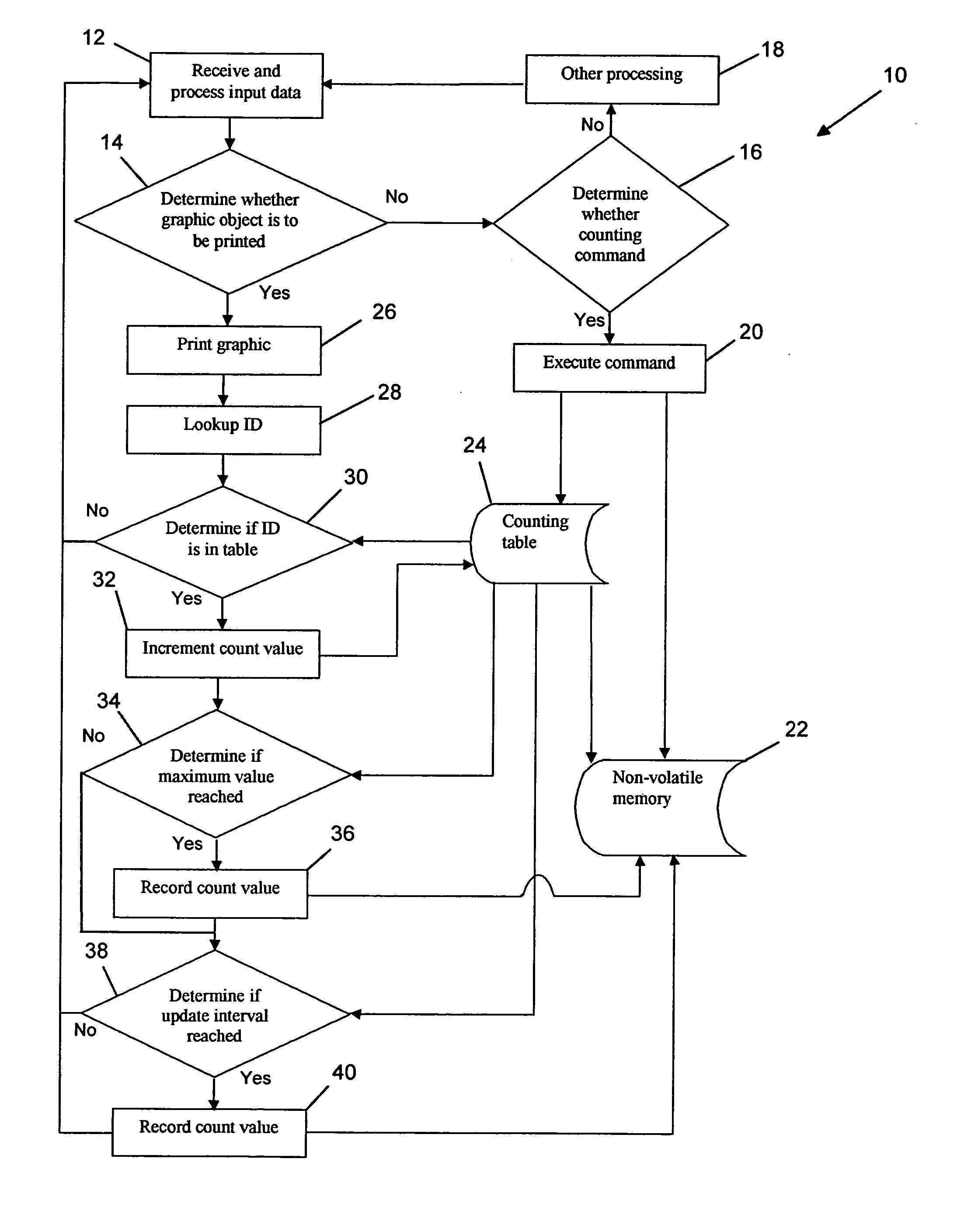Method for counting POS printing of graphic objects
- Summary
- Abstract
- Description
- Claims
- Application Information
AI Technical Summary
Benefits of technology
Problems solved by technology
Method used
Image
Examples
Embodiment Construction
[0017] Referring now to the drawings, wherein like numerals refer to like parts throughout, there is seen in FIG. 1 a process 10 for counting the number of times a particular graphic object is printed by a POS system by adding a meta datum—the print count—to graphic objects.
[0018] The first step in the method of the present invention is to receive and process input data 12 according to conventional POS printing processes. Once received, the data is examined to determine whether a graphic object is to be printed 14. If a graphic object is not to be printed, the data is checked to determine whether a counting command 16 is present, as will be described in detail below. If the data does not include a counting command, other processing 18, e.g., printing 18, may occur and control passes back to step 12. If the data does include a counting command, the command is executed 20 and the appropriate action is taken in the non-volatile memory 20 and / or counting table 22. For example, if the c...
PUM
 Login to View More
Login to View More Abstract
Description
Claims
Application Information
 Login to View More
Login to View More - R&D
- Intellectual Property
- Life Sciences
- Materials
- Tech Scout
- Unparalleled Data Quality
- Higher Quality Content
- 60% Fewer Hallucinations
Browse by: Latest US Patents, China's latest patents, Technical Efficacy Thesaurus, Application Domain, Technology Topic, Popular Technical Reports.
© 2025 PatSnap. All rights reserved.Legal|Privacy policy|Modern Slavery Act Transparency Statement|Sitemap|About US| Contact US: help@patsnap.com



